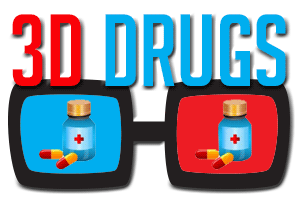
Last week, the Food and Drug Administration (FDA) made an extremely unique drug approval that was the first of its kind. In fact, it was one of the most revolutionary drug-related approvals seen in years. The FDA approved the first 3D printed drug, Spritam (levetiracetam), which is used to treat certain types of seizures. Just imagine: pills manufactured directly from a 3D printer. Based on a technology first developed by Massachusetts Institute of Technology (MIT) in 1997, Aprecia Pharmaceuticals’ 3D drug printing technology allows the company to manufacture tablets that can be easily absorbed orally and therefore would be indicated in patients who have issues swallowing.
I first heard of the potential with this technological innovation from a TED talk given by Lee Cronin, a chemist from the University of Glasgow. Cronin, along with other chemists and pharmaceutical companies across the globe, envision 3D printing as the future for drug manufacturing and I think there is reason to support such a claim. While the innovation is still in the infant stage of development, it does not take long to imagine the possibilities that Cronin outlined in his talk will likely be within our reach in the near future.
While the FDA will have much to say about any new potential for manufacturing, 3D drug printers could be the way forward in allowing for patient-specific care. Currently, if I need a prescription for antibiotics, my physician would select the right drug for the infection and prescribe one of a few strengths manufactured today. However, 3D drug printing technology could allow for specific drugs and strengths based on my weight, genetics, age, etc. That is, if 3D drug printers find their way from pharmaceutical companies to physicians’ offices or pharmacies, the ways to customize medications based on patient-specific needs would be endless.
And of course, the more concerning option comes to mind pretty quickly when thinking through all the potential scenarios. Imagine if individuals could somehow obtain their own 3D drug printers. Resourced with a 3D drug printer, the right software and “chemical inks,” they could potentially find ways to manufacturer their own controlled substances like opioids or benzodiazepines. Or maybe even worse, it leaves the potential for individuals to have the ability to develop brand new, never-studied drug molecules that could lead to unknown adverse events and consequences.
As technology advances and provides greater opportunities for patient-specific care, industry leaders need to be watchful for advancements that could lead to potential problems. While cutting-edge solutions like 3D printing could provide amazing care and savings, they also have the potential to create new health safety risks if technology advances faster than regulation.
Dr. Paul Peak
Director Clinical Pharmacy, Complex Pharmacy Management
Sedgwick